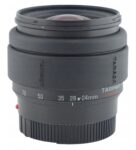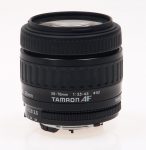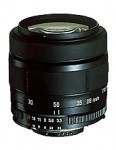Announced
Production status
Original name
Pros and cons
Genres or subjects of photography
Recommended slowest shutter speed when shooting static subjects handheld
Sigma 28-70mm F/3.5-4.5 IA ZEN
Standard zoom lens • Film era • Discontinued
Abbreviations
| IA | The lens features electrically driven zoom mechanism. |
Specification

| Optical design: | |
| 28mm - 70mm [2.5X zoom ratio] | |
| F/3.5 @ 28mm - F/4.5 @ 70mm | |
| 35mm full frame | |
| Minolta/Sony A [44.5mm] | |
| Pentax K [45.5mm] | |
| 75.4° @ 28mm - 34.3° @ 70mm (35mm full frame) | |
| 11 elements in 8 groups | |
| On Sony DSLR-A/SLT-A APS-C [1.53x] cameras: | |
35mm equivalent focal length range: | 42.8mm - 107.1mm (in terms of field of view) |
35mm equivalent speed range: | F/5.4 @ 28mm - F/6.9 @ 70mm (in terms of depth of field) |
Diagonal angle of view: | 53.6° @ 28mm - 22.8° @ 70mm |
| On Pentax K APS-C [1.53x] cameras: | |
35mm equivalent focal length range: | 42.8mm - 107.1mm (in terms of field of view) |
35mm equivalent speed range: | F/5.4 @ 28mm - F/6.9 @ 70mm (in terms of depth of field) |
Diagonal angle of view: | 53.6° @ 28mm - 22.8° @ 70mm |
| Diaphragm mechanism: | |
Diaphragm type: | Automatic |
Aperture control: | None; the aperture is controlled from the camera (Minolta/Sony A) |
| Aperture ring (Manual settings + Auto Exposure setting) (Pentax K) | |
| 6 (six) | |
| Zooming: | |
Zoom mechanism: | Electrically driven (Manual control possible) |
Zoom control: | Zoom ring |
Manual zoom mode selector: | None |
Zoom type: | Rotary |
Zooming method: | <No data> |
Additional features: | Zoom lever |
| Focusing: | |
| 0.5m | |
| 1:6.5 @ 70mm | |
Focusing modes: | Autofocus, manual focus |
Autofocus motor: | In-camera motor |
Manual focus control: | Focusing ring |
Focus mode selector: | None; focusing mode is set from the camera |
Manual focus override in autofocus mode: | - |
| Optical Stabilizer (OS): | |
| - | |
| Physical characteristics: | |
| 350g (Minolta/Sony A) | |
| ⌀79×64.5mm (Minolta/Sony A) | |
| Accessories: | |
| Screw-type 52mm | |
| <No data> | |
| <No data> |
Source of data
- Manufacturer's technical data.
Manufacturer description #1
A remarkable series of high performance Sigma "IA" Intelligent Auto zoom lenses begins with these versatile 28-70mm and 70-210mm zooms. Spanning the wide angle to telephoto range, these are the first independent lenses equipped to take advantage of all the advanced electronic functions of Minolta "xi" and Pentax PZ autofocus SLR cameras. Autofocus and power zoom are only the beginning of the capabilities of these incredibly responsive lenses.
AF 28-70mm F/3.5-4.5 IA - A versatile, wide to tele "IA" Intelligent Auto zoom lens that's just 2.5" (L) x 3.1" (D), and weighs just 13.8 oz.
AF 70-210mm F/4-5.6 IA - A long, fast, smooth "IA" Intelligent Auto zoom lens that's surprisingly compact at 3.4" (L) x 3.1" (D), and light for its range at only 16.6 oz.
- Motorized power zoom for "touch controlled" adjustments that let you frame the subject quickly to your desired image size.
- Integrated "fuzzy logic" electronics for fast, smooth, precise instant response.
- Auto Standby Zoom (ASZ) lets you use pre-programmed distance and zoom settings. Automatically zooms to focal length required for best composition.
- Advanced Program Zoom (APZ) maintains composition as subject's distance changes (when used with appropriate Minolta "xi" expansion cards).
- Full manual zoom capability for added creative control.
- Wide-View Mode lets you see what's outside the picture area - so you never miss action or framing.
- Advanced, user-friendly functions and controls include autofocus, power focus and a complete set of scales (focusing distance, depth of field, infrared correction mark, etc.).
- Flash interlocking capability for automated control of built-in or external flash.
Manufacturer description #2
These motorized power zooms offer "touch controlled" adjustments that let you frame your subject quickly and zoom smoothly to your desired image size. Using integrated electronics, they give you precise, instant response. Their Auto Standby Zoom (ASZ) feature lets you use pre-programmed distance and zoom settings. This means the lens will automatically zoom to the focal length best suited for composition at the particular distance. An Advanced Program Zoom system (APZ) maintains the composition even as the subject's distance changes. In addition to this auto focusing, there is also full manual zoom for added creative control. They both feature a Wide View Mode so you can see what is outside the picture area - to get all the action and perfect framing too.
From the Popular Photography magazine (February 1993)
"At last," thought Minolta and Pentax. "Now that we've added power zoom to our Maxxum xi and Pentax PZ cameras, we have a feature that pesky independent lens makers can't offer."
Wrong. Allow us to present two lenses the independents "wouldn't" make: the 28-70mm f/3.5-4.5 and 70-210mm f/4-5.5 IA Intelligent Auto Sigma Zooms. Optically, they're the same as the two Sigma AF lenses we tested in Nov. 1990, but they now power zoom and power focus, in their (not surprisingly) unique Sigma way.
Turn the knurled, rubberized zoom ring and the lenses power zoom; the more you turn, the faster the zooming action. Pull back on the zoom ring and twist it if you want to zoom manually.
If you push the handy lens control button once, the power-zoom ring becomes a power manual-focusing ring. Push again and the lens returns to its normal zooming control.
The 28-70mm focuses to 20 inches and the 70-210mm focuses to 47 inches. Both accept 52mm accessories and have very legible distance and depth-of-field scales (rare these days) but no focal-length scales. They're finished in the traditional Sigma ZEN outer flocking, which is both handsome and grippable.
From the editor
Pentax K-mount version of this lens was introduced at Photokina 1992.
Frequently asked questions
-
What does the Sigma lens designation "ZEN" mean?
It means that the lens has a ZEN finish. ZEN is an acronym for Zeitgeist ("the spirit of the times"), Enhancement, and Nonglare. This nonreflective urethane resin finish was introduced around 1989 and replaced the old-style, painted satin-black finish. Sigma claimed it to be hard, strong, antichemical, nonslip, antiglare, and scratch-resistant, however, it actually had a tendency to peel off and become sticky as it aged.
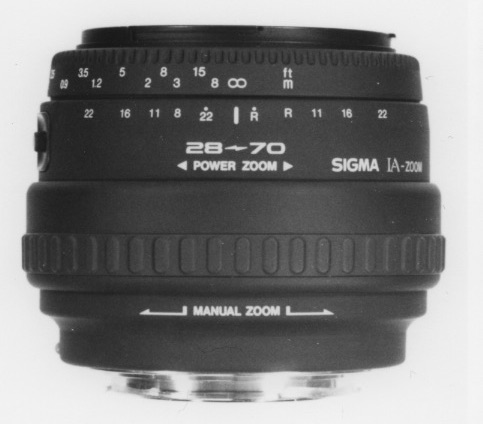
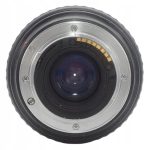
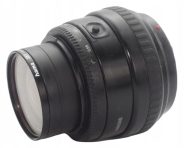
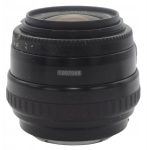
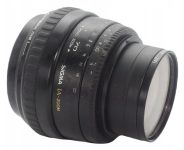
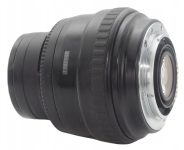
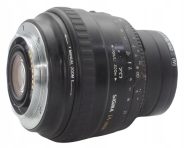
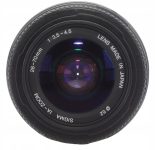
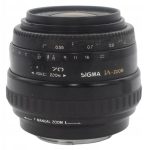
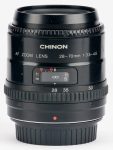

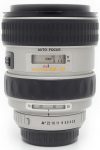
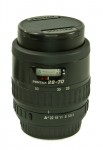
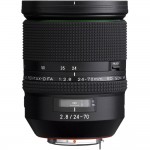
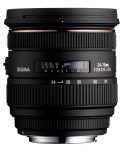
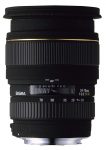
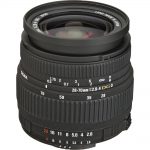
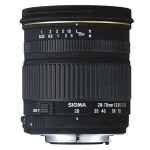
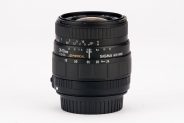

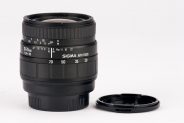
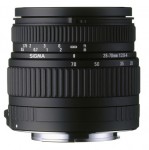
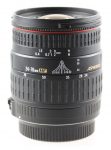


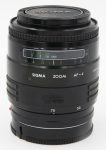

![Tamron SP AF 28-75mm F/2.8 XR Di LD Aspherical [IF] Macro A09](https://lens-db.com/wp-content/uploads/2012/07/t2875sd2-130x150.jpg)

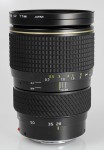
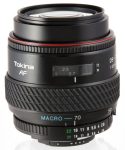
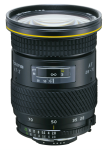

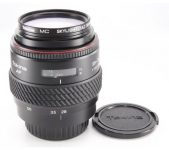
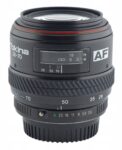
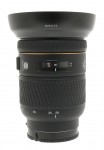
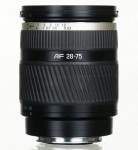
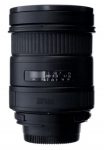
![Sony Carl Zeiss Vario-Sonnar T* 24-70mm F/2.8 ZA SSM [SAL2470Z]](https://lens-db.com/wp-content/uploads/2012/07/zeiss-24-70-125x150.jpg)
![Sony 28-75mm F/2.8 SAM [SAL2875]](https://lens-db.com/wp-content/uploads/2012/08/Sony_28_75_2.8_4e4e716346bbc-103x150.jpg)
![Sony ZEISS Vario-Sonnar T* 24-70mm F/2.8 ZA SSM II [SAL2470Z2]](https://lens-db.com/wp-content/uploads/2015/04/1140694-150x150.jpg)
![Tamron SP AF 24-70mm F/2.8 Di [VC] USD A007](https://lens-db.com/wp-content/uploads/2012/07/tamron_24-70_f2-8vc-108x150.jpg)
